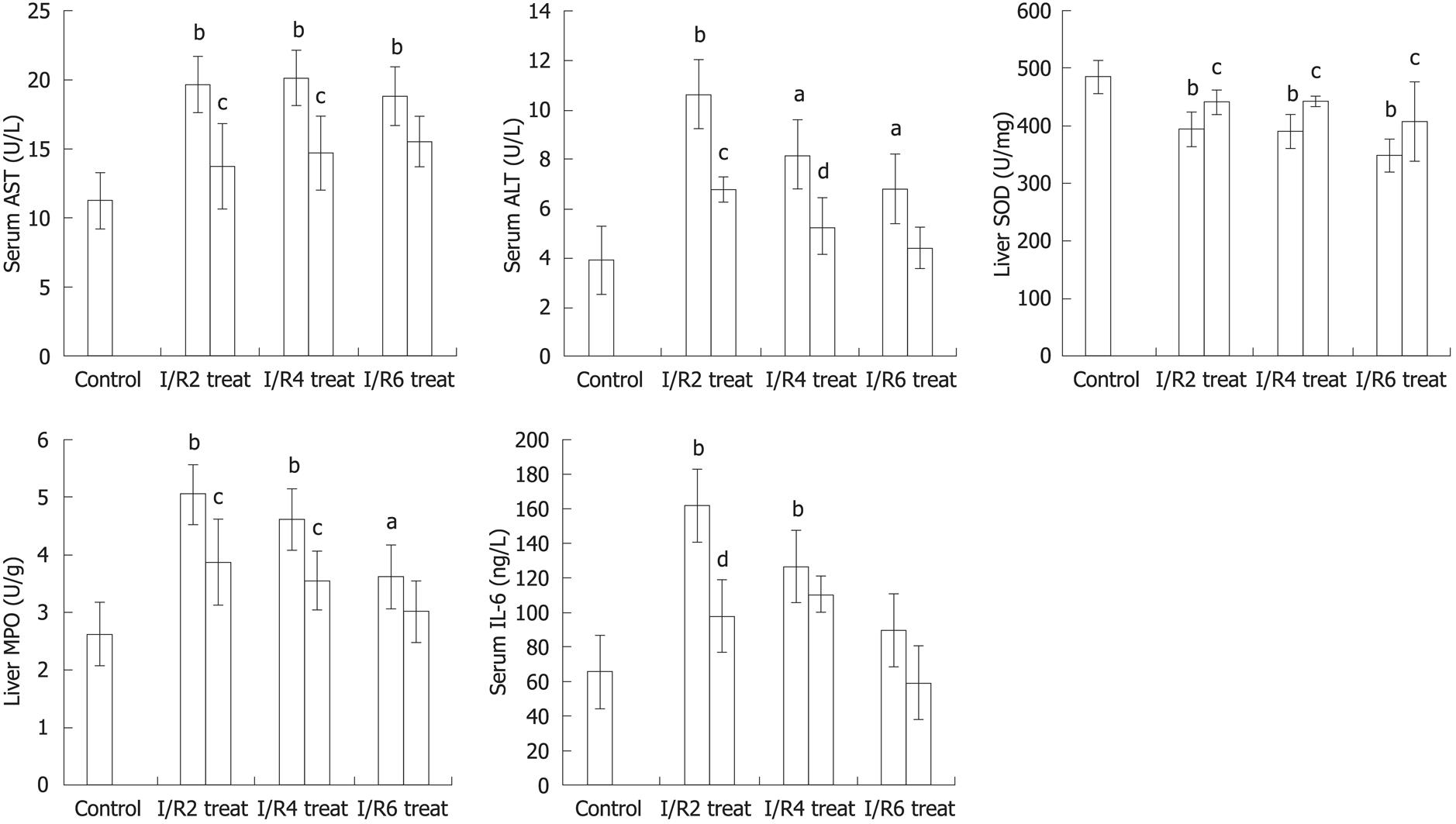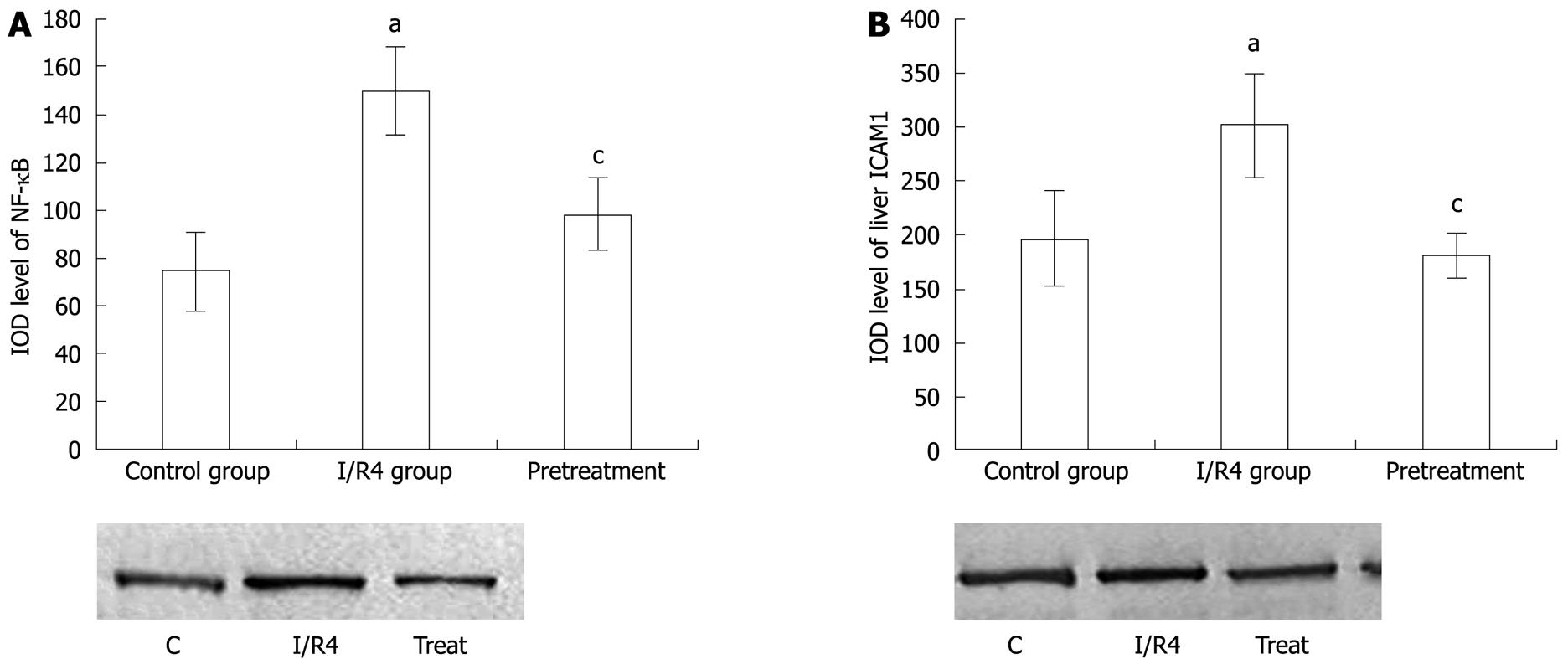Copyright
©2009 The WJG Press and Baishideng.
World J Gastroenterol. Jul 14, 2009; 15(26): 3240-3245
Published online Jul 14, 2009. doi: 10.3748/wjg.15.3240
Published online Jul 14, 2009. doi: 10.3748/wjg.15.3240
Figure 1 Changes in histology of intestine and liver tissues (× 200) in the control (A), intestinal I/R (B) (1 h ischemia and 4 h reperfusion) and carnosol pretreatment (C) groups.
A: Normal structure of intestine and liver; B: Edema, hemorrhage and neutrophil infiltration were observed in intestinal mucosa and liver tissue; C: Relatively normal histology of intestine and liver with less inflammatory cell infiltration.
Figure 2 Activity of serum AST (U/L), serum ALT (U/L), liver tissue SOD (U/mg), liver tissue MPO (U/g) and serum IL-6 (ng/L) in different groups.
After 1h intestinal ischemia and 2, 4 and 6 h reperfusion, the serum was assayed for AST, ALT and IL-6 activity. The liver tissue was assayed for SOD and MPO level. Data are expressed as mean ± SD. aP < 0.05, bP < 0.01 vs control group; cP < 0.05, dP < 0.01 vs I/R group.
Figure 3 Immunohistochemical staining of liver NF-κB p65 (× 400) in the control (A), I/R (B) (1 h ischemia and 4 h reperfusion) and carnosol pretreatment (C) groups (carnosol 3 mg/kg intraperitoneal administration).
Figure 4 IOD level of western blotting analysis of liver NF-κB p65 (A) and ICAM-1 (B) in the control, intestinal I/R (1 h ischemia and 4 h reperfusion) and carnosol pretreatment groups (carnosol 3 mg/kg intraperitoneal administration).
Data are expressed as mean ± SD. aP < 0.05 vs control group; cP < 0.05 vs I/R group.
- Citation: Yao JH, Zhang XS, Zheng SS, Li YH, Wang LM, Wang ZZ, Chu L, Hu XW, Liu KX, Tian XF. Prophylaxis with carnosol attenuates liver injury induced by intestinal ischemia/reperfusion. World J Gastroenterol 2009; 15(26): 3240-3245
- URL: https://www.wjgnet.com/1007-9327/full/v15/i26/3240.htm
- DOI: https://dx.doi.org/10.3748/wjg.15.3240
















